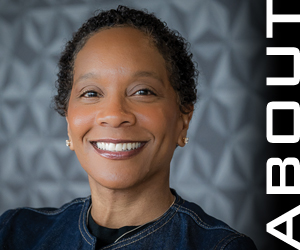Evolving Accountant | Fall 2023
DEI: Meaningful Change Requires an Ecosystem
Cultivating a diverse and inclusive workplace requires commitment. Is your organization up to the challenge?

Andrea Wright, CPA
Partner, Johnson Lambert LLP
Trends in Accounting, Auditing, and Consulting
The concept of diversity, equity, and inclusion (DEI) can be traced back to the civil rights movement of the 1960s, where advocates fought for equal rights and an end to racial segregation. The nonviolent protests of this pivotal era sparked conversations about justice, fairness, and inclusion in all aspects of society, including the workplace. Over the subsequent decades, DEI evolved and expanded beyond racial diversity and equity to include gender, sexual orientation, age, disability, and more.
The murder of George Floyd in May 2020 ignited the societal DEI conversation in a way that we hadn’t seen since the 1960s. In the weeks and months that followed, DEI became the cornerstone of business practices, aiming to create a workplace environment in which every employee feels valued, respected, and empowered, regardless of their background. During this time, managing partners and CEOs signed DEI pledges, companies hired DEI consultants, chief DEI officers were hired en masse, recruiting and training budgets were increased, and much more. Fortunately, after three years of intense focus, we’ve learned a few things:
- The journey toward DEI is long and evolving, rooted in historical context and societal shifts.
- Employees haven’t been satisfied with a “lip service” approach to DEI.
- While representation and training are important elements of a healthy DEI environment, they represent only a small section of the DEI ecosystem.
If these lessons have taught us anything, it’s that DEI is a continuous endeavor—it can’t be done piecemeal. However, there’s one strategy that organizations can adopt to drive meaningful DEI changes—a commitment to building a DEI ecosystem.
In the United States, colleges and universities are leading the pack on this strategy, concentrating on systemic DEI efforts. They’re thinking about the implications of DEI as a holistic shift in how they exist and how they engage within their local communities and society overall. While colleges and universities may have been among the first groups to think of DEI as an ecosystem, corporations also see the value in this. For example, Donald Fan, Walmart’s former senior director of the Global Office of Culture, Diversity, Equity, and Inclusion, once challenged companies to take their DEI journeys seriously, stating that “a culture change only happens when organizations go beyond check-the-box programs and invest in an ecosystem cultivating a diverse and inclusive workplace.”
Of course, building a DEI ecosystem won’t be without its challenges. Employees who view these efforts as forced or unnecessary will resist, and unconscious biases and deeply ingrained cultural norms can hinder these initiatives. For some organizations, acknowledging the need for change and fostering an environment of open dialogue will be their first steps toward creating a more inclusive workplace. Though, I believe that organizations who’re ready and willing to “level up” on their DEI efforts can get there.
So, how can organizations build a DEI ecosystem? I believe it starts with these foundational steps:
- Transforming systems, policies, and practices. Review and update your policies and practices to ensure they’re fair and inclusive for all employees. This may include flexible work arrangements, family support, parental leave, and/or accommodations for individuals with disabilities.
- Training and coaching staff. Provide ongoing training opportunities to raise awareness about unconscious biases, stereotypes, and microaggressions. This training should empower employees to recognize and address these issues. Additionally, these trainings should include a robust coaching program that provides support and training for employees from underrepresented groups to ascend into leadership positions, fostering a more diverse leadership team.
- Equipping the C-suite with inclusive leadership skills. Having a top-down strategy for DEI is critical. Senior leadership must demonstrate a genuine commitment to DEI through their actions, policies, and decisions.
- Managing DEI fatigue, overwhelm, cynicism, and shame. Your organization should anticipate these feelings and sentiments and have a plan to manage them. Being clear with employees about a particular DEI issue your organization is facing, setting small goals with realistic expectations, and empowering your employees to take actions that move your DEI initiatives forward are all ways that can help you be prepared and respond to these matters.
- Building employee resource groups (ERGs). Establish ERGs based on shared identities or interests to provide space for your employees to connect, share experiences, and offer insights to one another.
- Recruiting and retaining underrepresented talent. Revise and broaden your recruitment strategies to attract diverse candidates. To achieve this, consider expanding recruitment methods to include nontraditional sources, such as social media, alumni clubs, and affinity groups.
- Surveying employees. This can serve as a benchmark to measure progress from your employees’ viewpoints. By conducting periodic surveys, you can track the effectiveness of your DEI initiatives and make an assessment as to whether those initiatives are having the desired effect.
- Having transparent metrics and accountability. Set measurable DEI initiatives and regularly communicate progress to your entire organization. Take this step seriously and hold leaders accountable for achieving the goals set by the organization.
- Encouraging open communication. Create safe spaces for your employees to discuss DEI, including their concerns and experiences.
The DEI journey is just that—a journey. It’s ongoing and requires steadfast attention and effort to be meaningful. As your organization prepares for the changing demographics and disruptive trends that societal evolution promises to bring, operating within a DEI ecosystem may just be the competitive advantage you need to cultivate a diverse and inclusive workplace.
Related Content: